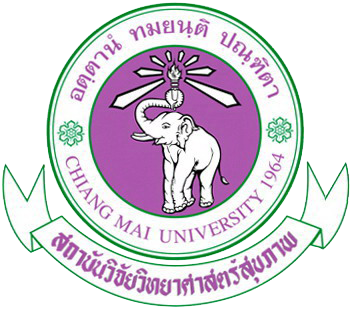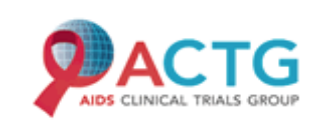Study name : Strategic Timing of AntiRetroviral Treatment (START) A Multicenter Study of the International Network for Strategic Initiatives in Global HIV Trials (INSIGHT)
Research network (Code) : START
Principle investigator : Professor Khuanchai Supparatpinyo, MD
Co-PI : Dr. Patcharaphan Sugandhavesa
Sponsor:
University of Minnesota – Clinical and Translational Science Institute
Collaborators:
National Institute of Allergy and Infectious Diseases (NIAID)
Copenhagen HIV Programme (CHIP) — Copenhagen, Denmark
Medical Research Council (MRC) Clinical Trials Unit — London, United Kingdom
The Kirby Institute for Infection and Immunity in Society
The Institute for Clinical Research at the Veterans Affairs Medical Center — Washington, D.C., USA
French National Institute for Health and Medical Research-French National Agency for Research on AIDS and Viral Hepatitis (Inserm-ANRS)
German Federal Ministry of Education and Research
NEAT – European AIDS Treatment Network
National Health and Medical Research Council, Australia
National Institutes of Health Clinical Center (CC)
National Cancer Institute (NCI)
National Heart, Lung, and Blood Institute (NHLBI)
National Institute of Mental Health (NIMH)
National Institute of Neurological Disorders and Stroke (NINDS)
National Institute of Arthritis and Musculoskeletal and Skin Diseases (NIAMS)
Abbott
Bristol-Myers Squibb
Gilead Sciences
GlaxoSmithKline
Merck Sharp & Dohme Corp.
Tibotec Pharmaceutical Limited
Information provided by (Responsible Party):
University of Minnesota – Clinical and Translational Science Institute
Study start
Open : enrolled the first participant on April 2009 closed to accrual on 23 Dec 2013
Target: HIV-1-infected males and females aged ≥18 years, 4,688 participants.
Study design
This is a multicenter, international, randomized trial for HIV-infected adults comparing initiation of ART at a CD4+ cell count > 500 cells/mm3 (early ART) versus initiation of ART at a CD4+ cell count of < 350 cells/mm3 (deferred ART)
Objective
Primary Objective
To determine whether early ART is superior to deferred ART in delaying the occurrence of a composite outcome consisting of AIDS*, non-AIDS, or death from any cause.
Secondary Objectives
a. To compare early ART to deferred ART for each component of the primary composite endpoint:
• AIDS* or death from AIDS
• Non-AIDS or death not attributable to AIDS
b. To compare early ART to deferred ART for the following secondary outcomes:
• All-cause mortality
• Non-AIDS
• CVD (myocardial infarction, stroke, coronary revascularizaton)
• ESRD (initiation of dialysis, renal transplantation)
• Decompensated liver disease
• Non-AIDS malignancy, excluding basal and squamous cell skin cancers
• Non-AIDS malignancy, including basal and squamous cell skin cancers
• AIDS
• Bacterial pneumonia
• Adverse events
• Hospitalization
• Quality of life
• Health-care utilization and cost of care
• HIV transmission risk behavior
• HIV drug resistance
• Pulmonary embolism or deep vein thrombosis
• New-onset diabetes mellitus
• Coronary artery disease requiring drug treatment
• Congestive heart failure
• Peripheral arterial disease
• Change in estimated GFR and development of proteinuria
• Blood pressure and blood lipids
• ECG abnormalities
• Use of blood pressure- or lipid-lowering treatment or aspirin
• Fractures
c. To compare early ART with deferred ART for the primary composite outcome and other major clinical outcomes in subgroups defined by the following characteristics measured at baseline:
• Age
• Gender
• Race/ethnicity
• Presence and levels of risk factors for serious non-AIDS conditions (e.g., smoking, estimated GFR (eGFR), hepatitis co-infection, diabetes mellitus, estimated CVD risk, lipids, blood pressure, presence of resting ECG abnormalities, age, and gender)
• Baseline CD4+ cell count
• Baseline HIV RNA level
• Geographic region
• Calendar date of enrollment
• ART regimen specified prior to randomization
Other Objectives
For a robust comparison of the early and deferred ART groups, the groups must differ by a substantial amount in exposure to ART during follow-up. The first three objectives listed below are aimed at understanding whether protocol assumptions are valid and at evaluating adherence to the protocol.
a. To compare the early and deferred ART groups for:
• ART use over follow-up
• HIV RNA levels over follow-up
• CD4+ cell counts over follow-up
b. To describe the early and deferred groups with respect to:
• Initial ART regimen used
• HIV RNA and CD4+ cell count response to the initial ART regimen
• Number of changes in ART regimen over all follow-up and during the first year of treatment
• Non-adherence to treatment strategy (e.g., discontinuation of ART in early ART group or initiation of ART too early in the deferred group)
c. Among participants in the deferred group, to estimate the rate of decline of CD4+ cell counts until the CD4+ declines to < 350 cells/mm3, to estimate the fraction of participants who develop a primary event prior to starting ART, to estimate time to first ART initiation, and to estimate the fraction of participants who initiate ART before the CD4+ declines to < 350 cells/mm3
d. Among participants in both treatment groups, to study predictors of AIDS* and non-AIDS
e. To estimate the prevalence and levels of non-AIDS risk factors at baseline (e.g., smoking, eGFR, hepatitis co-infection, diabetes mellitus, estimated CVD risk, lipids, blood pressure, presence of resting ECG abnormalities, age, and gender)
f. To evaluate the informed consent process by comparing comprehension of study requirements for those consented with a concise versus standard consent (in a subset of sites)
Significance
N/A
Progression Closed to accrual, ongoing follow-up. Estimated Primary Completion Date is November 2017
Interesting findings
N/A
Publications
N/A
Link to project’s web site
https://clinicaltrials.gov/ct2/show/NCT00867048
http://insight.ccbr.umn.edu/




